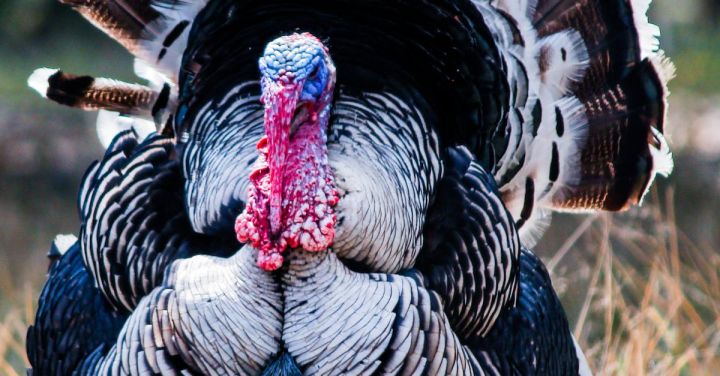What Are the Unique Traits of Wild Turkey Behavior?

Wild turkeys are fascinating creatures with unique behavioral traits that set them apart from other birds. From their intricate courtship displays to their highly social nature, these birds have captivated the interest of researchers and wildlife enthusiasts alike. In this article, we will explore the fascinating behaviors that make wild turkeys so special.
Social Structure: Flocking Together
One of the most notable traits of wild turkey behavior is their highly social nature. Unlike many other bird species, wild turkeys exhibit a complex social structure. They form flocks, known as “rafter,” consisting of multiple individuals. These flocks provide safety in numbers and allow for increased vigilance against predators. Within a rafter, there is a clear hierarchy, with dominant males known as “toms” leading the group.
Courtship Displays: A Dance of Attraction
During the breeding season, male wild turkeys engage in elaborate courtship displays to attract females. These displays involve puffing out their feathers, spreading their tail feathers into a beautiful fan, and strutting around in a rhythmic fashion. The males also emit a variety of vocalizations, including gobbling and drumming sounds, to showcase their fitness and dominance. These courtship rituals not only serve as a means to attract mates but also help establish the pecking order within the flock.
Nesting and Parental Care: A Team Effort
Once a female turkey, known as a “hen,” has chosen a mate, she will construct a nest on the ground, usually concealed in dense vegetation. The hen will lay a clutch of eggs, typically between 8 to 15 eggs, which she will incubate for about 28 days. Interestingly, during this incubation period, the male turkeys play a surprising role. They take on the responsibility of protecting the nesting hens and their eggs, forming a cooperative and protective team effort.
Foraging and Communication: A Language of Sounds
Wild turkeys are highly vocal birds, using various sounds to communicate with each other. One of the most distinctive sounds they produce is the gobble, a loud and resonant call made by male turkeys. The gobble serves multiple purposes, including asserting dominance, attracting mates, and communicating with other members of the flock. In addition to gobbles, wild turkeys produce a range of other vocalizations, such as clucks, purrs, and yelps, to convey different messages within their social group.
Roosting and Flying: Masters of the Trees
While wild turkeys primarily forage on the ground, they are also skilled tree roosters. At night, they fly up into trees to rest and seek protection from predators. Their strong wing muscles and agile flight allow them to navigate through the treetops with ease. These tree roosts provide an elevated vantage point, ensuring the safety of the flock during the night.
Adaptability and Survival: A Success Story
The unique behavioral traits of wild turkeys have played a significant role in their adaptability and survival as a species. Their ability to form cohesive social groups, communicate effectively, and exhibit cooperative nesting and parental care behaviors has contributed to their resilience in the face of changing environments. Furthermore, their innate wariness and vigilance help them detect and evade potential threats, ensuring their continued existence in the wild.
In conclusion, wild turkeys possess a range of unique behavioral traits that make them a fascinating species to study. From their complex social structure and elaborate courtship displays to their cooperative nesting and vocal communication, these birds have evolved remarkable strategies for survival. By understanding and appreciating these behavioral traits, we can gain a deeper appreciation for the wonders of the natural world and the remarkable diversity it offers.
